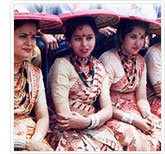Celtic New Year
Celt is a community of people in European countries speaking Celtic languages (mainly Indo-Europeans languages). These people celebrated various festivals and the most important amongst them was Samhain, the Celtic New Year. ‘Samhian’ is the word for November in the Irish language. November 1 is the Celtic feast of Samhain. This Celtic New Year is named after Sama – the Aryan God of Dead. Samhain in Gaelic (Scottish language) means “summer’s end”. Samhain begins with An Geamhradh (the beginning of the dark winter) and ends with Am Foghar (the Celtic harvest). Some other names are also associated with the Celtic New Year:

- The Third Harvest
- All Hollows Eve
- The Day of the Dead
- And the famous Halloweens Day.
History of Celtic New Year
According to the Celtic mythology, Samhain or Celtic New Year was a gap in time. During this gap period, ‘Our World’ and ‘Otherworld’ came together and thought that the dead could return to warm themselves at the places theylived.
Celtic New Year Rituals
The Celtic New Year has an important feature of ‘divination of events’. They use hazel nuts and symbols of wisdom for fortune telling. There were also some other Samhain traditions which referred to the Celtic Emhain Abhlach (Paradise of Apples) where the dead ate the scared fruit and became immortal.
Celts practice many rituals for their ancestors at this time. They put food and drinks for the dead and let their house doors opened to give the dead a free passage to enter their house. But all the spirits from the Otherworld were not good. To stop the evil spirits, villagers carved images of spirit guardians onto turnips and kept these ‘jack o’lanterns’ in front of their doors.
Celtic New Year’s Eve
Oidhche Shamhna or the Celtic New Year’s Eveplays a significant role in the New Year celebrations for the Celts. In earlier times, people used to collect their harvest and slaughtered cattle for feast. There were massive bonfires and people lit the hearth fires from the village bonfire. In this way, all the families spent their time with each other dancing and chanting Celtic songs.
Celtic New Year Celebrations
With the rise of Christianity, Samhain changed to Hallowmas or All Saints Day on November 1st followed by All Souls’ Day on November 2nd. The Celtic New Year popularly known as Halloween’s Day is celebrated with great enthusiasm by the people of West (United States, Ireland, UK, Canada etc). It’s celebrations begin on the night of October 31st. Young people dress up like dead spirits wearing carved out pumpkins over the faces. They move around the city in strange attires and performing Halloween activities. Samhain not only marked link between the worlds but also dissolved the structure of the society for the night. Boys and girls would swap their roles, wearing each other’s clothes and playing pranks on elders.



